TSA Issues New Alert About Taking Pets Through Airport Security
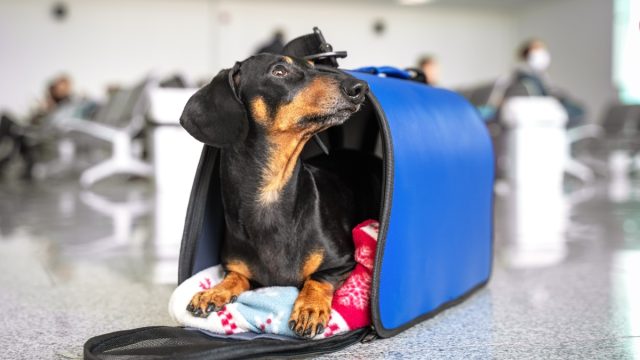
Airport security is stressful enough when you’re only worrying about yourself—but if you’re also in charge of your furry friend, the screening process can be that much more overwhelming. The reality, however, is that taking Fido to your hometown is sometimes simpler than finding a petsitter or a place where they can be comfortably boarded. If you’re taking your dog or cat with you over the holidays, you’ll want to pay attention to a new alert from the Transportation Security Administration (TSA) on what you should and shouldn’t do. Read on to discover their dos and don’ts for bringing small pets through airport security.
READ THIS NEXT: 5 Surprising Items TSA May Flag You for at Airport Security.
Recent events prompted the TSA to remind travelers about traveling with pets.
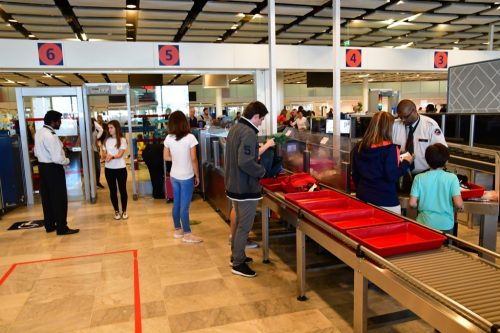
According to a Dec. 14 press release from TSA at Denver International Airport (DEN), the agency is anticipating a higher number of four-legged travelers over the holidays. And in light of recent events, officers want to ensure that jet-setting pets are safe and secure.
Since November, TSA has discovered two pets that have passed through the X-ray screening process. According to CNN, the first incident happened when a cat unknowingly slipped into a traveler’s bag before being scanned by the X-ray at John F. Kennedy International Airport in New York. Fortunately, the cat—named Smells—was freed by TSA agents and made it back home to Brooklyn in time for Thanksgiving dinner, per a tweet from TSA spokesperson Lisa Farbstein.
A second incident was reported at Dane County Regional Airport in Madison, Wisconsin, when a small pup ended up inside of a backpack and was “accidentally sent through the X-ray,” per a tweet from the airport. According to CBS News, the passenger had informed the airline that she was traveling with her dachshund/Chihuahua mix, but was not aware of screening protocol and failed to let TSA officers know at the checkpoint.
Neither animal was injured, TSA said, but they should not have been screened by an X-ray machine. To help streamline the security process, TSA is offering a few tips for traveling with these kinds of companions.
Here’s what you can expect.
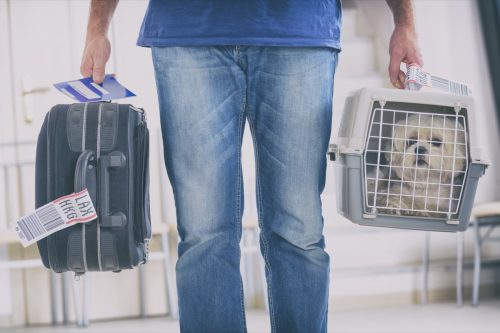
TSA states that small pets should travel in the airplane cabin with their owners, which means they will need to be screened at the checkpoint.
Pets should be in a hand-held travel carrier until they begin the screening process, and then can be taken out while the carrier—without the dog or cat inside!—goes through the X-ray machine. Pets must either be carried or walked through the screening process on a leash, but they should never go through the X-ray tunnel.
“The X-ray at the security checkpoint is used to screen passengers’ personal property and carry-on luggage only,” TSA warned.
When the process is complete process, your pet will be returned to their carrier away from the checkpoint. “This is to ensure the safety of the pet as well as other passengers,” the agency said.
By understanding and following these steps, you can avoid speed bumps during the security screening process. “TSA recognizes that for many pet owners, their animals are an extension of their family and they want to travel together,” TSA Deputy Federal Security Director for Colorado Anne Cross said in TSA’s release. “Becoming familiar with the screening procedures and how to clear security quickly and easily is the first step to embarking on a great trip with your pet.”
RELATED: For more up-to-date information, sign up for our daily newsletter.
There’s some additional information to keep in mind.
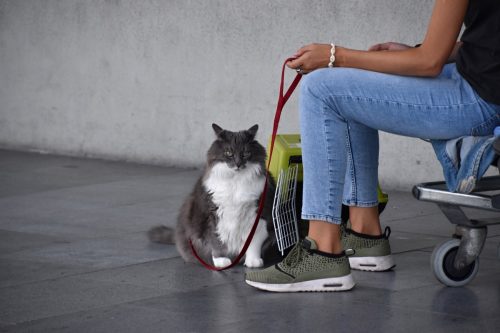
TSA recommends getting your pet acclimated to their travel carrier in the days before your trip, and familiarizing yourself with pet relief areas at the airports you’re traveling to and from. Keep an eye out for “working” K9s and handlers as well, and avoid checkpoints where working canines are stationed.
You should also ensure that your pet is healthy and up to date on their vaccinations: Having those records on hand when traveling can be particularly helpful, according to tips from Foothills Animal Shelter listed in the TSA release. The Golden, Colorado-based shelter further recommends booking direct flights if possible, ensuring your pet is microchipped and wearing a collar, and going with a carrier that gives your pet enough room to travel comfortably.
Don’t forget that they’ll need food and water, too, and if you have a cat, “provide a small elimination area in the carrier” and consider their feeding schedule, so that they won’t need to go to the bathroom while you’re in the air.
Different airlines have different regulations.
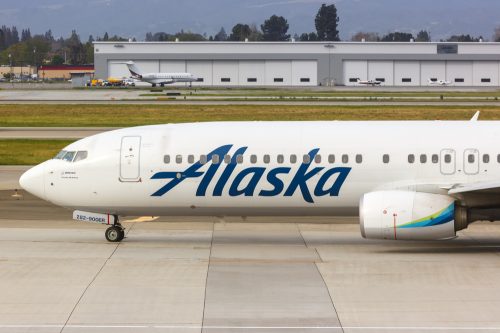
There are specific protocols to follow when bringing a pet to the airport, but in general, airlines have different regulations for the kinds of animals you can bring. Delta Air Lines, for example, allows travelers to bring small dogs, cats, and household birds, while American Airlines only allows cats and dogs.
Alaska Airlines adds rabbits to their list of pets able to travel in the main cabin—and if you’re comfortable with letting your pet travel in the baggage compartment, you can also take ferrets, guinea pigs, hamsters, non-poisonous reptiles, pot-bellied pigs, rabbits, and tropical fish along with you.
TSA recommends checking with your carrier before you book your travel plans. If you have a service pet or other “special circumstances,” reach out to the TSA Contact Center at 866-289-9673 or via email at [email protected].